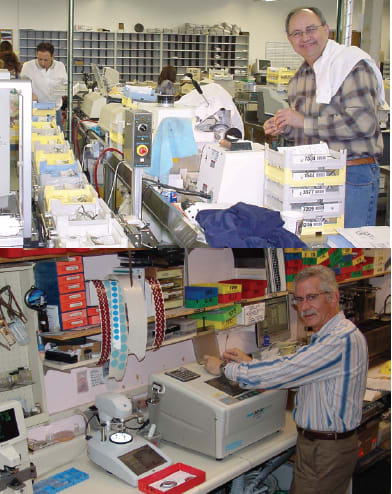eye on equipment
Survey SAYS
by Karlen McLean, ABOC, NCLC
Knowing what your peers are planning for in-office finishing can help you set goals for your own business.
According to EB's recent virtual focus group survey on equipment usage, being proactive can pay off. Here are the numbers and what you can do to enrich your business.
● LESS IS MORE. Of those surveyed, 62.2 percent don't finish lenses in-office. This can be an opportunity to differentiate your business in the marketplace. Do a cost analysis. Many equipment manufacturers offer this service at no charge.
● FUTURE INTENT. Of those who don't currently do in-office finishing, 9.6 percent said they would consider starting it in two years, and 10.6 percent said they would do so in five years. If in-office finishing appears to be the path your practice will take, make a plan to do so within the next five years. This can keep you ahead of others who are sitting on the fence.
● REASON WITH REALITY. Those that never plan to perform in-office finishing cite two main reasons: 1. A successful relationship with their wholesale lab (26.6 percent) and 2. Feeling that it's not cost effective for the practice.
Both are good reasons to stay with the status quo in terms of lab business. But don't make assumptions; delve a little deeper. A good relationship with your wholesale lab should include a plan for ramping up your profits and should also provide reasonable pricing. Your lab should be more than a price, product, and production house to you. You should also expect business-building assistance, training/education, and other additional services.
● NECESSARY UPGRADE. The lens-related equipment that ECPs report they are planning to purchase or upgrade within the next three years include finishing equipment (24.3 percent), followed by tinting equipment (10.1 percent).
When purchasing in-office lab equipment, it's important to ask if the system is upgradable. If it is, ask for details on the upgradability; if not, you may want to look at upgradable systems to ensure your office's ability to be flexible and adopt future changes.
● SERVICE FIRST. Respondents rated service (72.6 percent), followed by return on investment (71.9 percent), then reputation of the vendor (65.5 percent) as major considerations when seeking lab equipment.
Obtain every detail of how an equipment company handles the service component before buying anything. In the selection process, it's helpful to pose your service questions as potential scenarios. EB
| ASK around | |
|---|---|

Top to bottom: A wholesale lab production line; a tidy in-house lab. Courtesy of Santinelli International | Potential buyers look to friends and colleagues first (68.2 percent) when seeking information on equipment purchasing decisions, followed closely by optical industry manufacturers (62.2 percent). Virtually, they utilize trade magazine websites (77.5 percent) and industry manufacturer sites (45.8 percent) the most. Several equipment manufacturers feature testimonials on their websites and can provide the contact information of other ECP users for referrals. In addition to visiting booths at trade shows, reach out to your professional organizations, as they may be able to recommend practitioners who use equipment you are interested in purchasing. |



